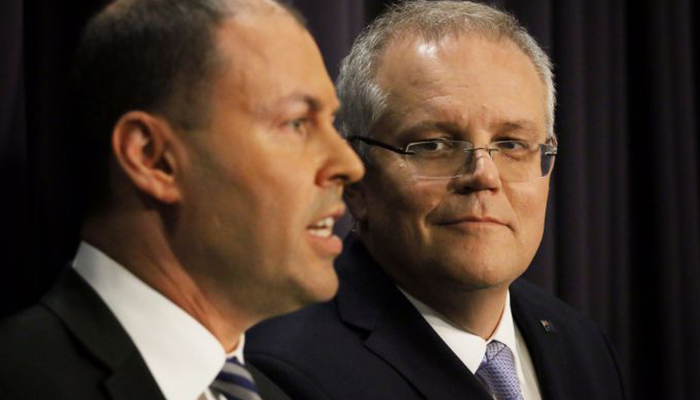Surpluses, tax cuts and infrastructure are the key themes outlined by Treasurer Josh Frydenberg in last night's highly unusual Budget, coming a full month early and with no time to legislate the plan it outlines before the election..
1. “We believe in lower taxes”
Front and centre, the Government has made much of its effort to return the Budget to a surplus of $7.1b. Well, it predicts a surplus next financial year (this year is actually still a deficit).

There are also significant tax cuts coming, mainly in future years, and mostly already legislated out of the last budget. Initially they target low and middle income earners (about $1,000pa if you earn $48,000), but the full tax cuts down the track deliver most to those at the top (about $11,000 if you earn $200,000).
Go to the Budget home page and you can use a ‘Tax Relief Calculator’ to work out just how much you will get.
The pitch reflects the battle lines of the election. Almost every second sentence in the Treasurer’s speech concluded ‘without raising taxes’. The Government committed to a ‘tax speed limit’, ensuring tax revenue does not rise above 23.9% of GDP. This sets up a contest with Labor.
Labor’s plan creates very real policy difference, and room for Labor to announce significant spending during the campaign.
The electoral difference between the parties is not quite as stark as it first seems, because Labor is also promising very large income tax cuts. But Labor is also looking to raise revenue.
Labor says it is closing loopholes, the Government says they are tax rises. This includes limiting negative gearing and capital gains tax concessions, and limiting access to franking credits. Each of these changes prevents some tax payers claiming concessions, but none changes the underlying tax rate. Labor’s plan creates very real policy difference, and room for Labor to announce significant spending during the campaign.
Returning to surplus after a decade is an achievement. But you might be surprised by how they got there. Revenues are set to rise next year as a proportion of the economy. Since 2013/14 spending has fallen 0.8% of GDP, while revenues have increased 2.7% of GDP (https://www.budget.gov.au/2019-20/content/overview.htm).

Election announcement or economic statement?: More cash to spend, less tax to pay and better car parking for commuters were the top three sweeteners announced by Treasurer Josh Frydenberg and Prime Minister Scott Morrison in last night's Federal Budget.
The future surplus is very much built on higher taxes, but not higher tax rates. Instead it has been built on tax creep and higher company profits as commodity prices rise (see: https://www.theguardian.com/australia-news/2019/apr/02/federal-budget-2019-the-seven-graphs-that-expose-the-coalitions-2019-budget-fairy-tale). Bracket creep tends to hit lower income earners harder, evidenced in higher income earners contributing a smaller proportion of the tax take. Closing tax concessions does the opposite, as higher income earners claim the bulk of these concessions (https://grattan.edu.au/wp-content/uploads/2016/04/872-Hot-Property.pdf).
2. Infrastructure or pork barrel?
There is also significant money going into infrastructure. Total spending grows to $100b, although much of that was already committed by previous Budgets. Perhaps the most surprising feature of this spending was how many relatively small scale investments this included.
The Government is promising to upgrade local roads to speed up the school drop off, help fund commuter car parks and school libraries. There are some larger announcements too. But how did such relatively small scale spending make the Budget speech? It does look like a lot of small announcements for local members to announce in a tight election.

Help for farmers: those facing drought were featured in the Treasurer's Budget announcements last night.
3. Other winners (and losers)
A number of other key constituencies got smaller announcements. There was extra help for farmers facing the drought and bigger tax concessions for small (and now relatively large) businesses. There will be more apprenticeships, especially in the regions. There is new funding in aged care, although notably not in the underfunded NDIS, which instead contributed to the future surplus through a large ‘underspend’.
Notably there is nothing for those on the lowest incomes – Newstart recipients – who were even initially excluded from the one-off payment to help low income earners pay their rising energy bills, until a last minute back-flip. Overall, combined with $158 billion tax cut, where the largest gains go to those earning over $200,000 a year, it is unlikely this Budget will help reduce rising inequality.

Ben Spies-Butcher is Associate Professor and Head of the Department of Sociology at Macquarie University. He has a PhD in Economics from the University of Sydney, is on the Board of Shelter NSW and is a Research Associate with the Retirement Policy and Research Centre at the University of Auckland.



